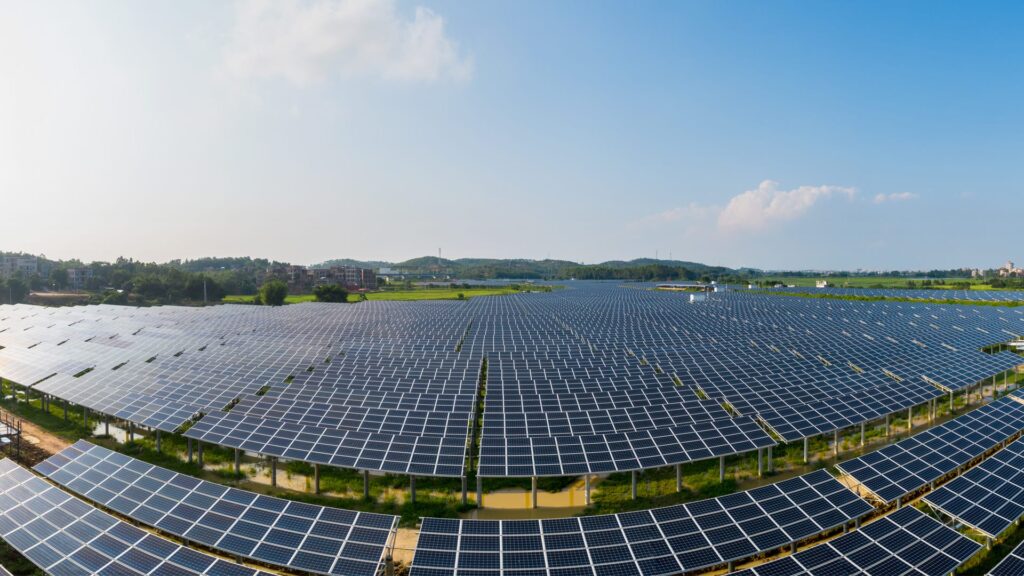Solar power is a reliable source of renewable energy. It’s also one of the most abundant sources of energy available to us. In fact, the sun provides so much energy that if it were all converted and stored, it would provide more than enough power to meet global demand for the next 10,000 years! Research shows that solar energy is becoming increasingly popular as an alternative source of electricity. In fact, according to Solar Choice, Australia now has the third-highest number of solar PV installations in the world. This demonstrates just how important solar energy is becoming on a global scale. This blog post will explore why solar power is such a crucial resource for our future — and what you can do to help make it happen sooner.
What is Solar Energy?
Solar energy is a type of renewable energy that’s generated by the sun. It can be used to generate electricity, produce heat, and provide light. One of the most appealing aspects is that it’s incredibly sustainable. The sun’s rays are vast and virtually inexhaustible, meaning solar panels can continue to generate power for decades to come. Solar panels are also highly efficient — they can turn a large amount of sunlight into energy with very little waste. For example, a solar panel that’s 36” x 84” can typically produce enough energy to power a small house! Solar energy is becoming a more popular source of electricity as we uncover new ways to make it more accessible. For example, more companies are now offering solar roof tiles that look just like traditional roof tiles. These tiles allow homeowners to power their homes using sunlight and provide a great alternative to traditional roofing materials.
Why Is Solar Energy so Important?
Solar energy is a crucial part of our sustainable future. It provides a sustainable, reliable source of renewable energy that can contribute to the power grids of countries around the world. Solar power is also incredibly inexpensive. In fact, studies show that it’s one of the most cost-effective forms of energy production available — and it’s expected to become even more attractive as technology progresses. However, solar energy hasn’t always been as widely used as it is today. In fact, less than 50 years ago, it was a relatively new source of energy — and many people weren’t convinced that it could ever be a sustainable or reliable source of electricity. Because of this, the government provided incentives to help encourage the growth of solar power. These incentives included tax deductions, cash grants, and low-interest loans. They also guaranteed that grid operators would purchase electricity from homeowners who installed solar panels on their property. These incentives paved the way for solar energy to become the powerhouse resource that it is today. However, we must continue to support solar power in order to ensure that it can keep producing enough energy to meet demand.
How Does Solar Energy Work?
Solar panels are designed to collect sunlight and convert it into usable energy. This process involves a series of steps that actually begins when sunlight hits the solar panel and a photon of light is absorbed by the silicon within the panel. That photon travels through the silicon and knocks an electron loose — and that electron travels through the circuit and into the electricity grid where it can be used as power. In most cases, a solar panel will produce DC power that needs to be converted to AC power (which is the type of electricity we typically use in our homes). This can be done using a device called an inverter that changes the energy and sends it to the electricity grid.
The Problems with our Current Energy System
It is one of the most sustainable sources of electricity available to us. However, it’s not currently being used to its full potential — and that’s a problem. The world currently uses a lot of energy — and most of it comes from non-renewable sources. In fact, according to the International Energy Association, fossil fuels account for more than 80% of the world’s energy supply. Oil and natural gas are the most popular fossil fuels, but they’re not sustainable sources of energy. We can only use them once — and once we use them up, they won’t be available again. That means we need to find more sustainable ways to generate electricity. Solar power is one of the most sustainable energy sources available to us. In fact, it’s one of the only types of energy that can be completely renewable.
Pros of Using Solar Energy
It is one of the most sustainable sources of electricity on the planet. As such, it can provide a reliable source of power for decades to come — and it won’t deplete any resources. This makes it an incredibly attractive option for people looking to go green. It’s also one of the most cost-effective forms of renewable energy. Solar panels are also incredibly easy to install. They’re designed to be as user-friendly as possible, so you don’t have to hire a professional to get them working properly for you. You just need to put them in a sunny spot, connect them to the grid, and let the solar panels do their thing.
Cons of Using Solar Energy
Solar power is a great source of renewable energy, but it does have its limitations. One of the main issues with solar energy is that it’s not consistent. The amount of electricity produced by solar panels is highly dependent on the weather — and that can make it difficult to rely on solar power alone. Solar panels can’t produce electricity at night, and they’re significantly less productive during cloudy weather. If a large portion of the country experiences an extended period of cloudy weather, solar panels might not be able to produce enough energy to meet demand. However, these limitations can be addressed with technological advancements and smart grid operations. For example, scientists are currently researching ways to store solar energy so it can be used at any time, day or night. This would make it far more reliable and consistent.
Solar Energy in Sudan
Sudan’s location enables it to receive a high amount of solar radiation, in fact, the highest amount in the world. Therefore, RIDA captured this leverage to power its mining plants in Sudan, making it one of the first mining companies in the country to work on this scale in Sudan.
RIDA Group, a leading mining company in Sudan, has been striving to put human first and has created the Green Mining Initiative, an initiative to bring renewable energy to the mining industry in addition to encouraging other mining firms to invest in solar PV to reduce pollution. RIDA has established strong connections with many renewable energy businesses and is striving to become one of Sudan’s leading private energy producers.
Conclusion
Solar energy is a sustainable, cost-effective form of electricity. It’s one of the most important sources of renewable energy available to us — and it’s expected to become even more significant in the coming years. In fact, solar energy is expected to become the world’s leading source of electricity by 2050. With the right investments, we can make that happen sooner — and ensure that we’re providing future generations with a sustainable, reliable source of power.


